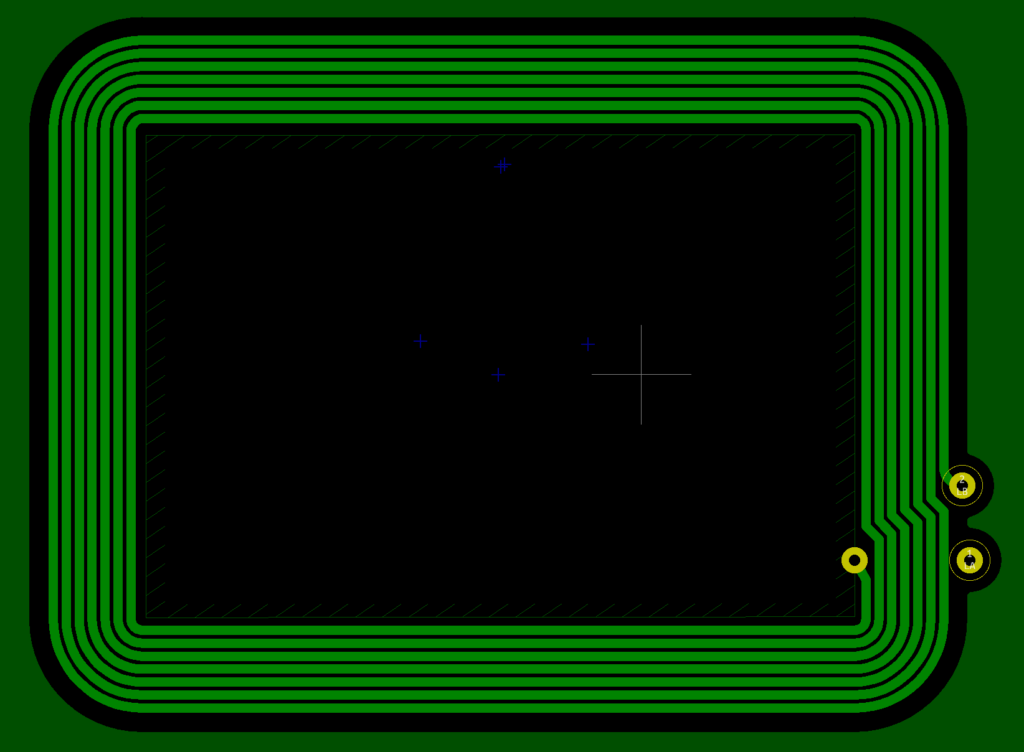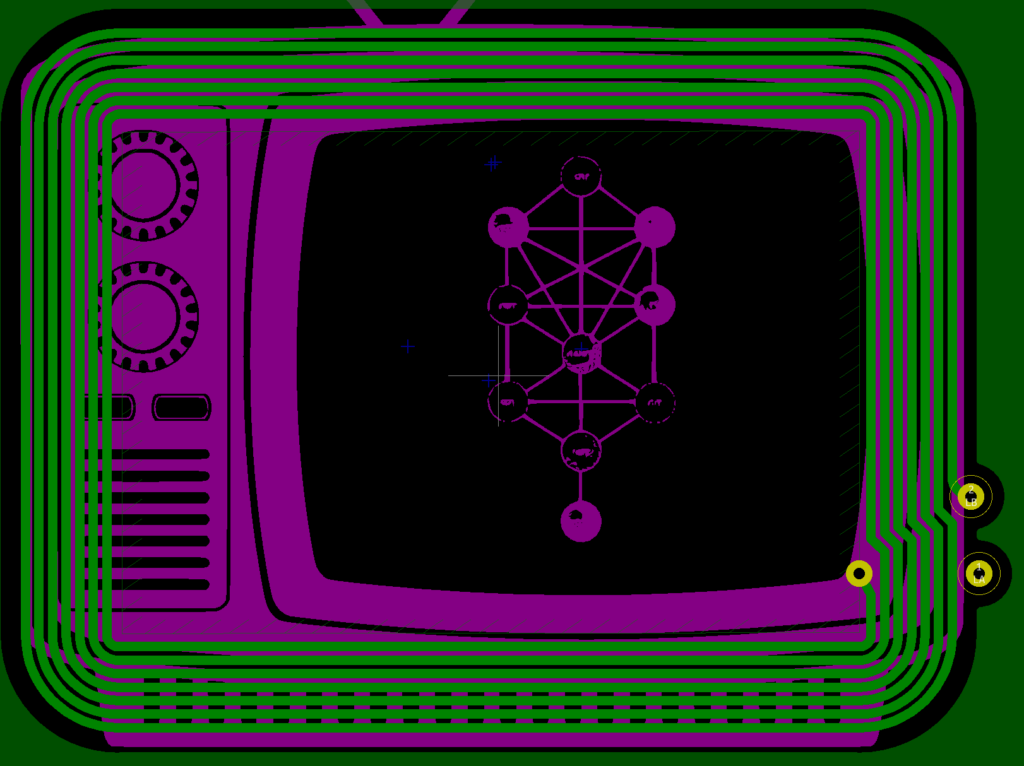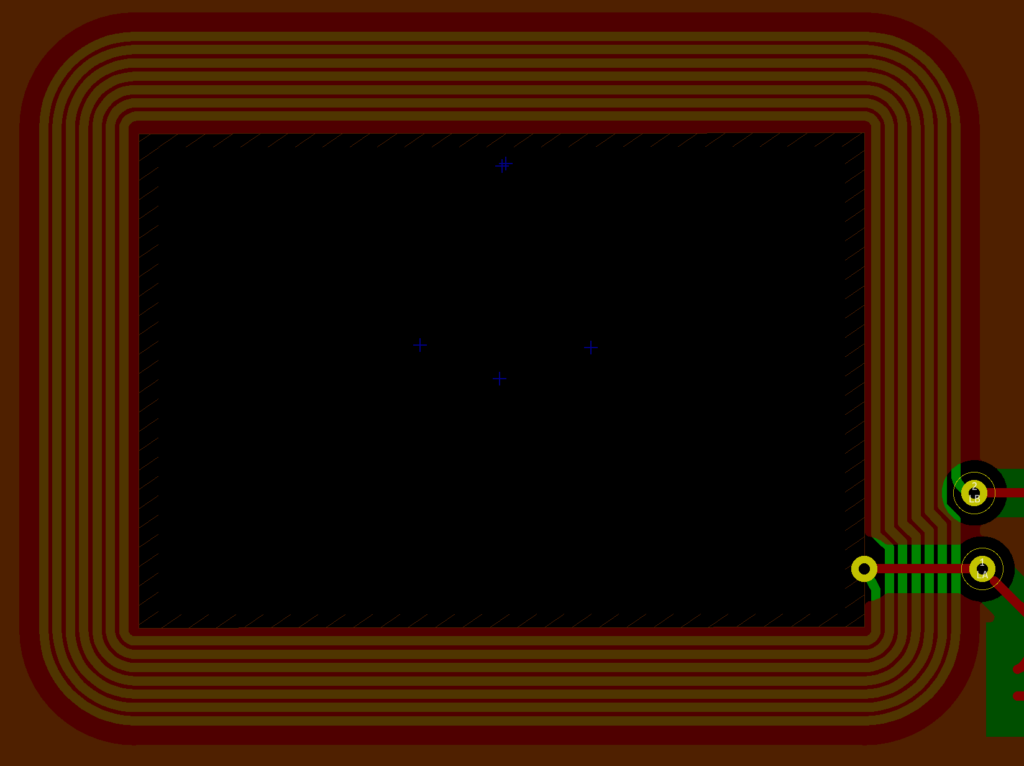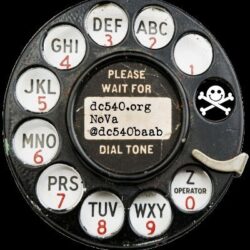I wanted to provide some follow-up on that. My first instinct was that it was an unsalvageable error, which lead to adding the anti-metal NFC sticker to make it “work” while bypassing the onboard circuit. Not that it matters, nobody at Defcon in their right mind is going to scan your NFC badge. “Sure, I’ll take your malware!”
I’ll dive into an explanation with lots of pictures, to make it easier for folks maybe newer to Kicad to see the issue.
Here is the back copper layer. You can see that there is the antenna, which is the tight loops in a rounded rectangle, and that there is a copper keepout zone defined inside the antenna. This side, we believe to be correct.

And for reference, here’s that same area with the silkscreen showing, so that you can see where the antenna lives on the backside.

With me so far?
Ok, here’s where my attention to detail failed me. Here’s the front side copper layer in the same area. I’ve left the back copper layer visible but dimmed, so you can see how they interact/compare.

You see what I did there? I was in such a hurry to do this that I didn’t think it through. I just copied the keepout zone from the back to the front, thinking they needed to be the same. They absolutely don’t need to be the same. The purpose of the keepout zone is to allow radio waves to travel THROUGH the antenna, energizing it. The back is correct, because you don’t want a keepout zone where you actually want copper (the antenna). The front side, well, the keepout zone should have extended just outside the antenna on the back. I hope that’s clear. The front copper fill (which isn’t even tied to a net, not even ground — it only exists for the unmasked areas to be shiny!) actually overlaps the antenna itself, preventing the thing this circuit needs to the most — radio waves flowing through the antenna.
So here’s a shot with all of it showing, so you can see what part of the copper would need to be removed for the circuit to work (hint: All of the copper on the FRONT side that covers up the antenna).

So I assumed it was a lost cause. That copper is INSIDE the board, or at least under layers of mask and silk. Surely that can’t be repaired, or isn’t WORTH being repaired.
But this is DefCon, of course, and Syntax, who I met in either LineCon or MohawkCon or both at my first DefCon in 2017, speculated that perhaps if one wet-sanded the silk, mask and copper out of that area blocking the antenna (basically the red area highlighted above — while being careful not to destroy the trace between the inside and outside of the antenna across the two vias) it could still work. It would look a little janky, but I might try it when I get home just for the experience. And then BradanLane suggested removing it with a laser and acid etch, which might be a little cleaner.
Idunno. I’m going to try it, because dammit, I really want to see my eye light up when I scan it. If any of you lunatics goes home and tries it as well, I’ll mail you the TSSOP-8 NFC chip if you don’t already have one, and you can install it yourself. It goes here:

Sorry I didn’t bring the NFC chips with to Defcon, but you would have lost them in your sticker bags anyway. I naively thought it was a lost cause, and I mean, it’s not like hackers enjoy the recovery of a lost cause by any means necessary, LOL. It’s not like a point of pride or something to overcome by applying brute force, stimulants, ADHD and procrastination on actual money-making projects, simply for the glory of having WON.

